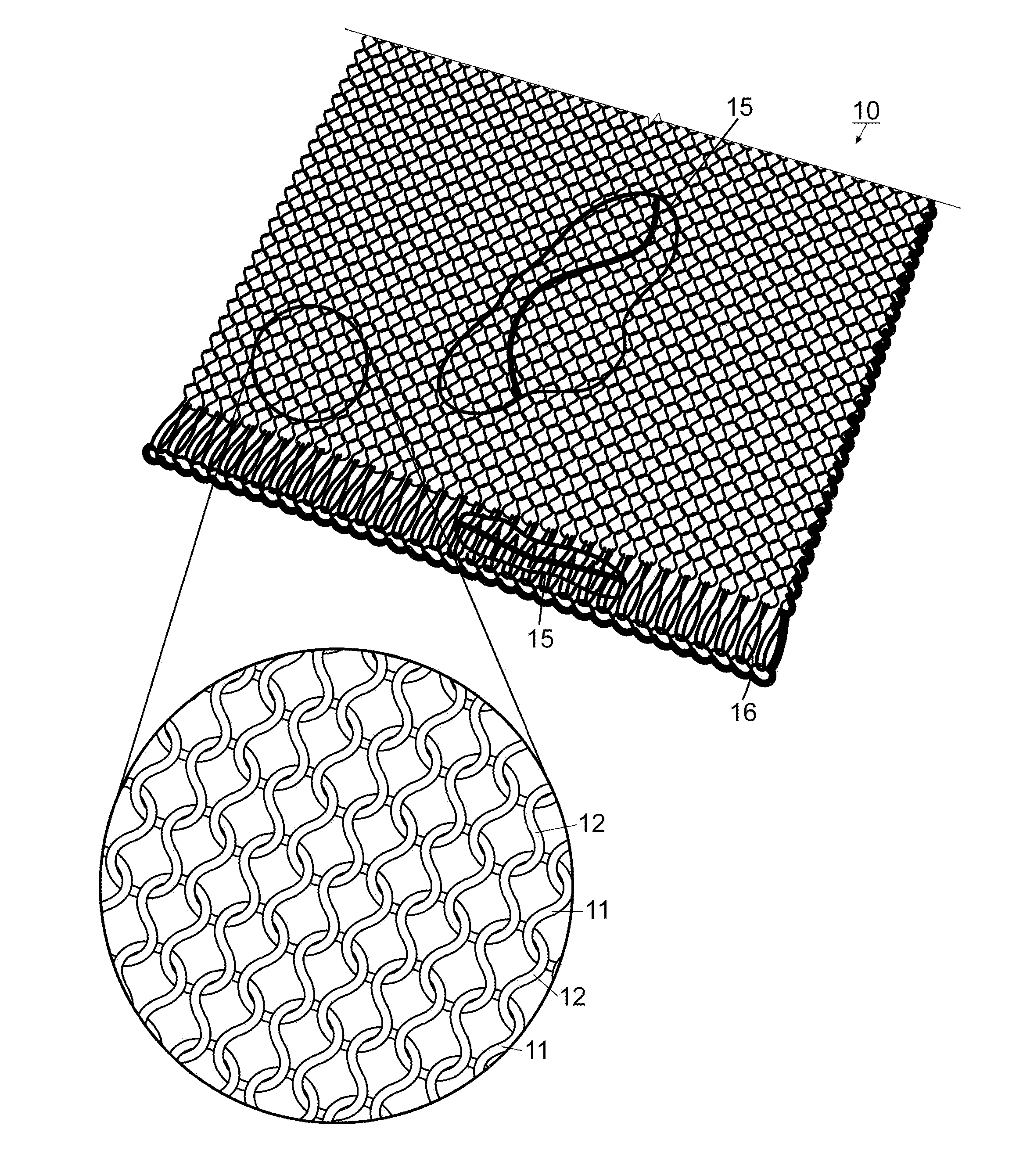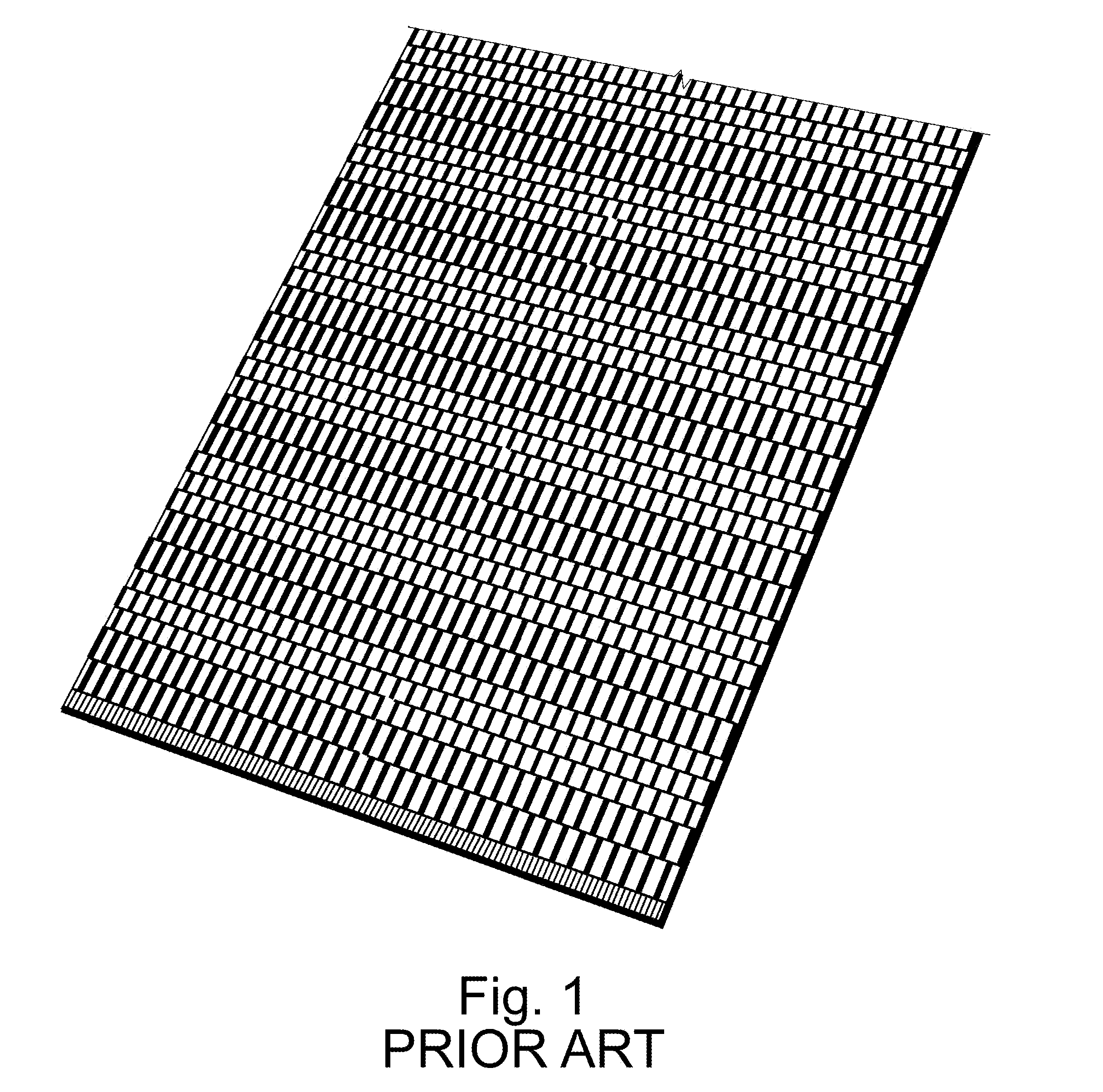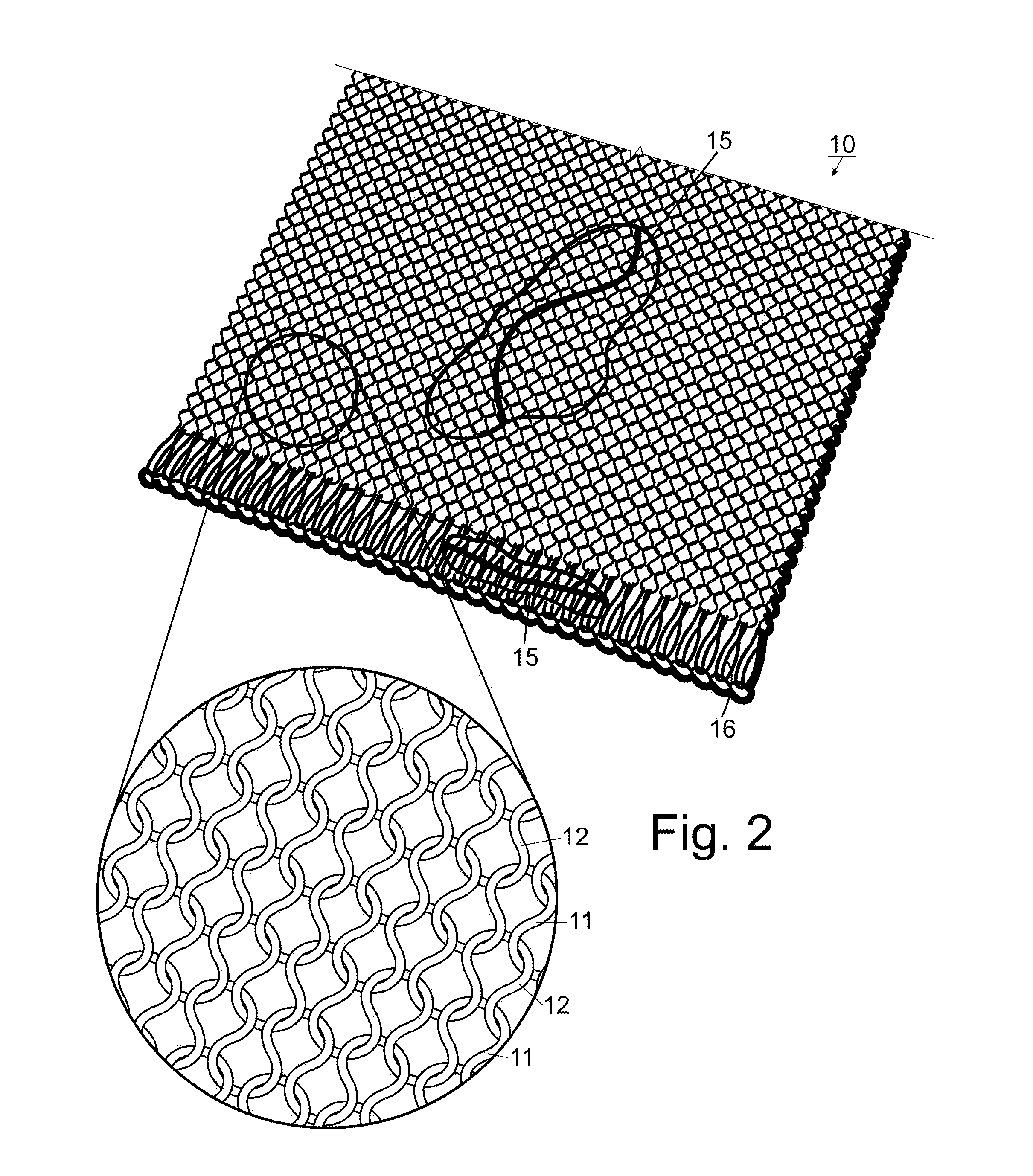Hemostatic textile
a tubular textile and textile technology, applied in the field of textiles, can solve the problems of limited distribution and use, difficult and expensive methods of producing textiles, and major contributors to morbidity and mortality, and achieve the effects of reducing the risk of bleeding
- Summary
- Abstract
- Description
- Claims
- Application Information
AI Technical Summary
Benefits of technology
Problems solved by technology
Method used
Image
Examples
Embodiment Construction
[0036]As described above, hemostatic bandages incorporating secondary fibers are known in the art. For example, FIG. 1 illustrates the prior art hemostatic bandage described in U.S. Pat. No. 8,377,467 (the '467 patent, currently licensed by the instant assignee) which is either woven or knitted and sold under the trade names Stasilon™ and NuStat™. The hemostatic bandage taught by the '467 displays hemostatic properties and fluid absorbency. To further enhance the hemostatic properties of the hemostatic textile made from the composite formed from glass and secondary fibers, additional blood factors such as thrombin, lyophilized blood cells, lyophilized platelets, fibrin, fibrinogen, or combinations of these, may be added. These additional factors aid in activating the body's natural hemostasis cascade and result in a material that can arrest bleeding. The combination of glass fibers, secondary fibers, and additional blood factors produced a hemostatic textile that arrests bleeding, a...
PUM
| Property | Measurement | Unit |
|---|---|---|
| Fraction | aaaaa | aaaaa |
| Fraction | aaaaa | aaaaa |
| Weight | aaaaa | aaaaa |
Abstract
Description
Claims
Application Information
 Login to View More
Login to View More - R&D
- Intellectual Property
- Life Sciences
- Materials
- Tech Scout
- Unparalleled Data Quality
- Higher Quality Content
- 60% Fewer Hallucinations
Browse by: Latest US Patents, China's latest patents, Technical Efficacy Thesaurus, Application Domain, Technology Topic, Popular Technical Reports.
© 2025 PatSnap. All rights reserved.Legal|Privacy policy|Modern Slavery Act Transparency Statement|Sitemap|About US| Contact US: help@patsnap.com



